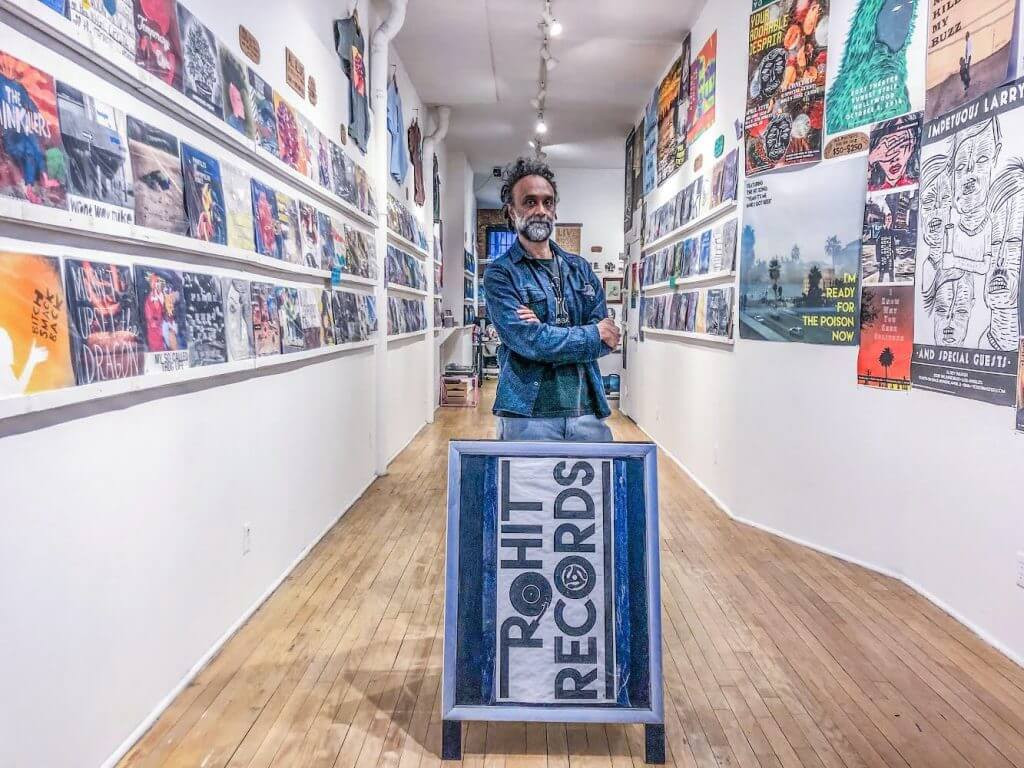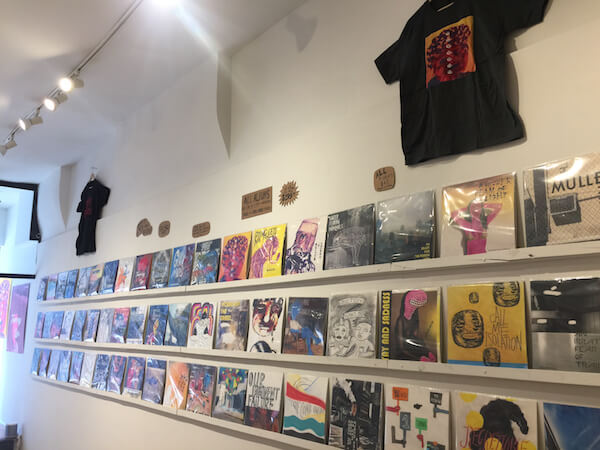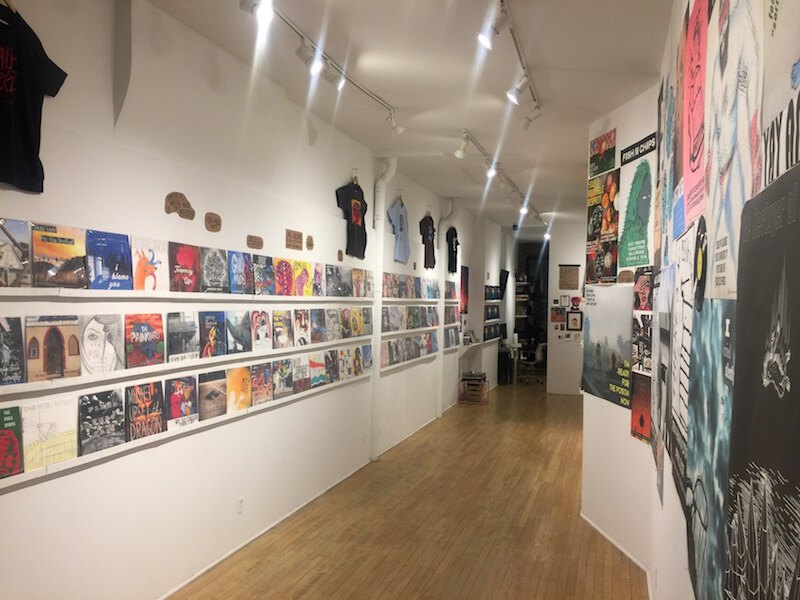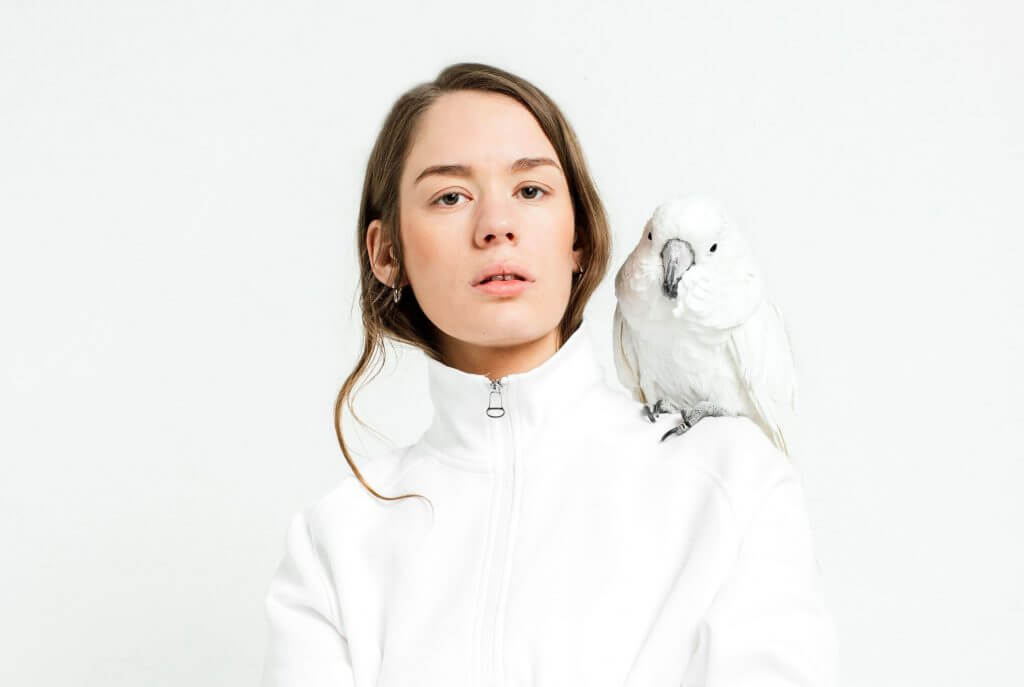Rohitash Rao: Fake Records, Real Art


With talent as a musician (he grew up playing the accordion) and artist, creative savant Ro combines his passions to create something uniquely spectacular. Remembering the days before music went digital, he spent a lot of his childhood at record stores browsing through album covers and admiring the cover artwork. Based in LA, he is also a music video director, so it is no surprise that his art is inspired by his passion for music. His departure from his career in advertising led him to a new chapter in his life when he started doing animation. His short “Battle of the Album Covers” was a fighting sequence showcasing the album art of various bands that he animated, which went viral getting written up in Rolling Stone and Entertainment Weekly. He has worked with big name bands that include My Morning Jacket, Poison, Sean Kingston, Colbie Caillat, A Great Big World and Capital Cities. Ro’s creates art for an imaginary records, the music flowing through his spirit and coming out in a beautiful work of art. He has created over 150 fake album art varying in all different kinds of genres and illustrative techniques; his creativity inspiring and contributing something notably unique to the art world. He has also recruited several musicians to create original music for the fake album covers and of course, he has begun to turn some of those songs into music videos.
What was it like transitioning from advertising to directing music videos? That’s a pretty big career jump, are you happy you took the artist’s route?
I really never saw my career on one specific path. I always liked the idea of just doing whatever interested me – even if I didn’t know how to do it. “Not knowing” has kind of been my mantra. It’s what gets me excited and what fuels whatever project I’m trying to solve.

What inspired combining art with records and why didn’t you design for actual records?
Great question – I think this entire project has been my secret dream to design actual records for bands. I had a teacher in school who designed some pretty famous album covers and I definitely thought I’d be doing that when I graduated. One of the reasons for this project was because I have tons of drawings, paintings and photographs laying around and I needed a place for them to live!

Do you feel music going digital is a good thing? What are the differences between when records existed and the music industry today?
I like the ease of digital music – especially when I’m walking down the street. I remember the days when you had a Walkman and you had to carry a few cassette tapes in your pockets, which was kind of cumbersome. But when it comes to playing music at home – I prefer my turntable and records over my ipad and Pandora. Not only because of the sound quality, but also the process of playing a record – it’s so intentional. I also like how records kind of divides up time into an “A”-side and a “B”-side – I actually paint based on that time structure. I put on a record and paint until that side ends, then take a little break, turn the record over, and then continue painting. It’s become a ritual now on how I create.
What was your inspiration for the artwork? They’re extraordinarily varied in design, and you use a wide range of conceptual illustrations.
Because I still have all my albums from high school and I still buy new records all the time, I have quite a collection – and they’re all over my living room. I stare at them all day and each one triggers an inspiration for me to make up my own band and artwork. Usually I start with a bandname and a logo. Then it just build out from there.

Are you happy you pursued your passion for art and didn’t take a conventional life path? Tell me about how the pressure your family put on you to pursue something more structured and why you didn’t?
My family was definitely not keen on me pursuing a career in art. They wanted a steady, safe job for me. Thus, advertising. But once I had that steady job I felt I could start to moonlight on my own creative endeavors. After a while I had some success – namely my children’s books – and my parents eased off a bit. Plus they saw that I was very happy so they were obviously fine with that!
How do you think the music industry has changed over the years and what can we as a collective group do about it?
I don’t know too much about the industry other than friends who are musicians and I know many of them are making very little on the sales of their records. I would like this Rohit Records idea to build into its own indie music label. And I would make it so all the musicians make a big chunk of sales.
What are your next steps as an artist?
For now I’m focusing on trying to take this fake records store concept as far as I can. I’m working on integrating an AR component to the show where you’ll be able to put your phone over every album cover and hear an original piece of music. I also want to start getting Rohit Records into music festivals like Coachella and Bonnaroo. More and more bands are joining the show, and I’m making more and more art. I feel like this is just the beginning.









Responses